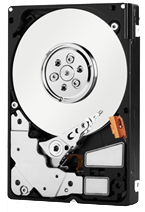
There's a new processor (CPU - Central Processing Unit) coming out from silicon (sand) by Intel soon - the Core i5 (as well as the i3). Yes, they're related to the i7, which is pretty much the best desktop CPU on the planet.
The main difference between the i7 and the i5 and i3 is that unlike the i7, the i5 and i3 will use a dual-channel memory module system instead, just like pre-i7 desktop platforms. While the i7 introduced triple-channel, the i5 and i3 are designed for middle-range or mainstream (i5) and entry-level (i3) desktops. But what chipset will it need?
If the i7 used the Intel X58 chipset, then the i5 and i3 will use the P55 chipset (for a start), followed by the various other desktop board chipsets that will come later. Since the i5 and i3 will be dual-channel, the contact pins on the CPU will also be less (1156 compared to the i7's 1366).
Other highlights of this new P55 chipset includes the new SATA3 (6Gbps or 600MBps) support (the ports remain the same just like how USB 3.0 ports look the same but support the newer speed - but that's not out yet though!).
SATA3 is designed for SSD (Solid State Drives), not HDD (Hard Disc Drive), as SSDs are faster since they work like USB Flash drives, since both are Flash drives, based on Flash memory. HDDs don't really make full use of SATA2 (3Gbps or 300MBps), so SATA3 is actually for SSDs.
Updated 15th July 2009 - However, PC Perspective has reported that ASUS (the largest board maker around), as well as Gigabyte (and maybe even MSI), who together make up the Big 3 Board Makers, have pulled the SATA3 feature from their upcoming P55 boards due to some problem with the Marvell 88SE9123 chip which powers SATA3 (apparently it can't go to 6Gbps speeds).
Anyway, the new P55 chipset is also a Southbridge, as the Northbridge is finally gone. In the X58 chipset, the Northbridge was a just a controller hub.
So while you need a new board and CPU cooler for the i5 and i3, you can use the same dual-channel DDR3 memory modules from the Intel 3 Series (depends on board) and 4 Series boards. Some might say it's a step backward, but some might say it's a step forward to bring the Core 2-class of CPUs to the i-class of CPU, while keeping the memory standard for mainstream.
The main difference between the i7 and the i5 and i3 is that unlike the i7, the i5 and i3 will use a dual-channel memory module system instead, just like pre-i7 desktop platforms. While the i7 introduced triple-channel, the i5 and i3 are designed for middle-range or mainstream (i5) and entry-level (i3) desktops. But what chipset will it need?
If the i7 used the Intel X58 chipset, then the i5 and i3 will use the P55 chipset (for a start), followed by the various other desktop board chipsets that will come later. Since the i5 and i3 will be dual-channel, the contact pins on the CPU will also be less (1156 compared to the i7's 1366).
Other highlights of this new P55 chipset includes the new SATA3 (6Gbps or 600MBps) support (the ports remain the same just like how USB 3.0 ports look the same but support the newer speed - but that's not out yet though!).
SATA3 is designed for SSD (Solid State Drives), not HDD (Hard Disc Drive), as SSDs are faster since they work like USB Flash drives, since both are Flash drives, based on Flash memory. HDDs don't really make full use of SATA2 (3Gbps or 300MBps), so SATA3 is actually for SSDs.
Updated 15th July 2009 - However, PC Perspective has reported that ASUS (the largest board maker around), as well as Gigabyte (and maybe even MSI), who together make up the Big 3 Board Makers, have pulled the SATA3 feature from their upcoming P55 boards due to some problem with the Marvell 88SE9123 chip which powers SATA3 (apparently it can't go to 6Gbps speeds).
Anyway, the new P55 chipset is also a Southbridge, as the Northbridge is finally gone. In the X58 chipset, the Northbridge was a just a controller hub.
So while you need a new board and CPU cooler for the i5 and i3, you can use the same dual-channel DDR3 memory modules from the Intel 3 Series (depends on board) and 4 Series boards. Some might say it's a step backward, but some might say it's a step forward to bring the Core 2-class of CPUs to the i-class of CPU, while keeping the memory standard for mainstream.
More Data?



















